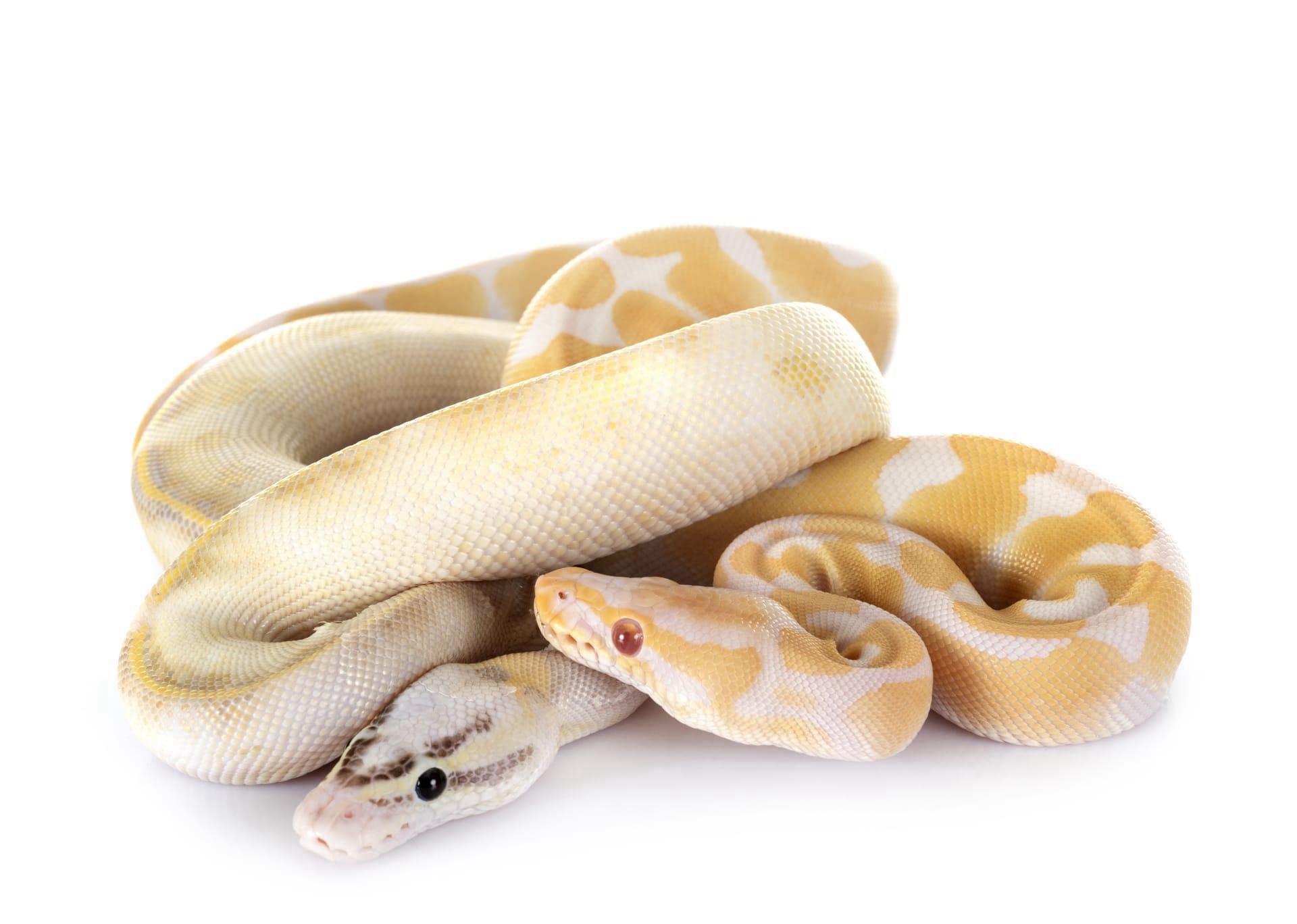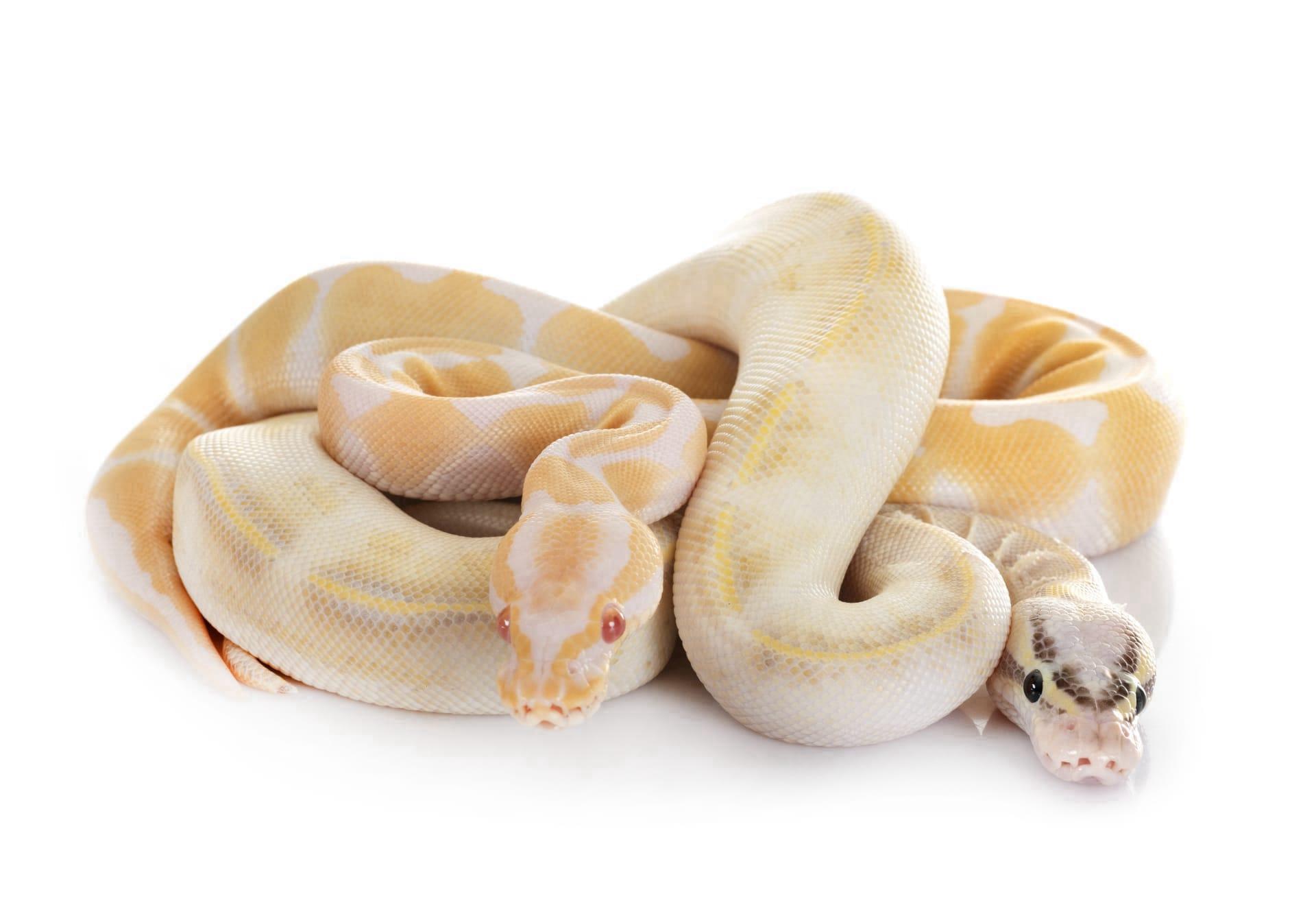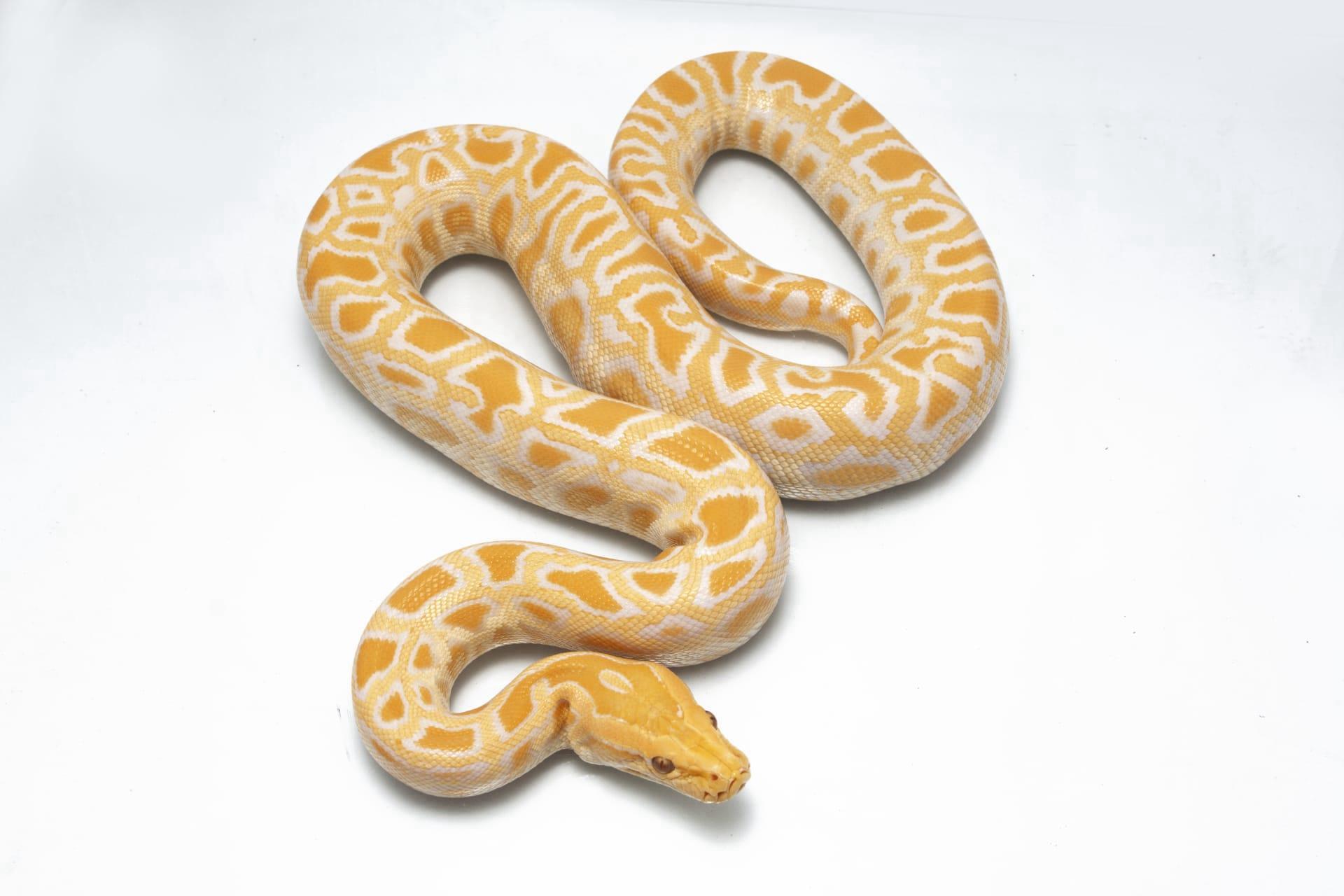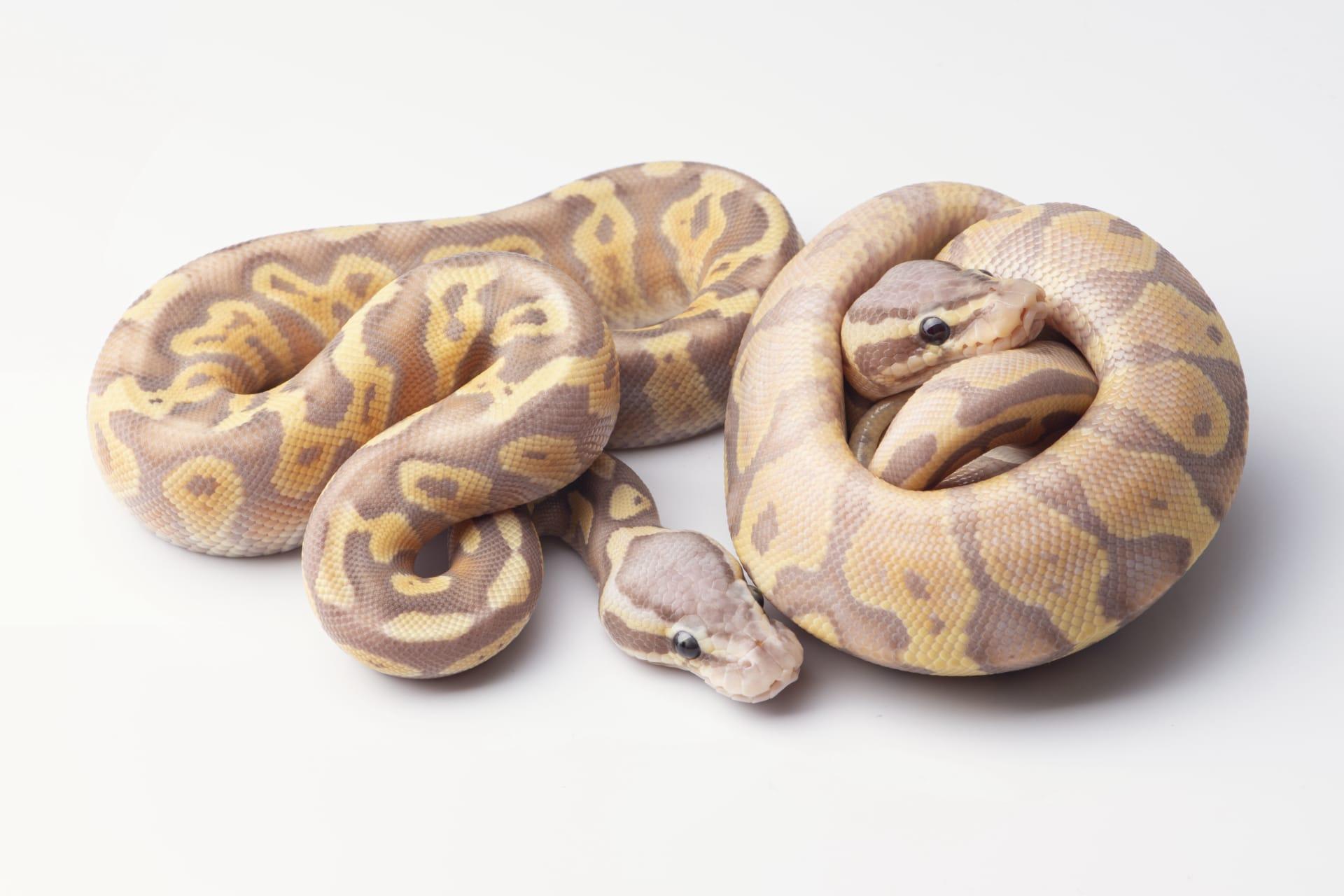Banana Ball Python Trivia
- Home /
- Trivia Question /
- Animal /
- Banana Ball Python Trivia
1
Question: What unique color characteristics does a Banana Ball Python have?
Answer: The Banana Ball Python is known for its striking coloration. It typically displays a vivid yellow or orange color mixed with dark bluish or purple spots. This pattern is due to a genetic mutation, making each snake's pattern unique. The yellow hue is most vibrant when the snakes are young and tends to fade slightly as they age, but it remains distinctly bright compared to other python varieties.
Question: How big does a Banana Ball Python typically get?
Answer: Banana Ball Pythons are relatively modest in size compared to other python species. On average, they grow to be about 3 to 5 feet (90 to 150 cm) in length. Males are usually smaller than females, with females reaching the upper end of this size range. Their growth rate is gradual, reaching full size in approximately 3 to 5 years.

2
Question: Is it true that Banana Ball Pythons can change color?
Answer: This is a common misconception. Banana Ball Pythons do not change color like chameleons. However, their coloration can slightly vary with age. The vibrant yellow or orange tones they are famous for at birth tend to become less bright as they mature, but the change is gradual and part of their natural aging process.
Question: Do Banana Ball Pythons require a special diet compared to other pythons?
Answer: Banana Ball Pythons do not require a unique diet compared to other ball python morphs. Their diet mainly consists of rodents like mice and rats, appropriate to the size of the snake. It's crucial to provide a diet that's proportionate to their size, typically one appropriately sized rodent every 1 to 2 weeks.

3
Question: How long do Banana Ball Pythons live in captivity?
Answer: Banana Ball Pythons have a relatively long lifespan in captivity, often living for 20 to 30 years with proper care. This longevity requires a commitment to long-term care, including proper habitat, diet, and regular health check-ups with a veterinarian familiar with reptiles.
Question: Are Banana Ball Pythons good pets for beginners?
Answer: Yes, Banana Ball Pythons are considered good pets for beginners. They have a docile temperament and are generally easy to handle. However, prospective owners should be aware of their long lifespan and the commitment required in terms of habitat, diet, and general care.

4
Question: What kind of habitat is ideal for a Banana Ball Python?
Answer: A Banana Ball Python thrives in a habitat that mimics its natural environment. A terrarium of at least 30 gallons is recommended, with a temperature gradient from 75 to 90 degrees Fahrenheit (24 to 32 degrees Celsius) and humidity levels between 50% to 60%. It's essential to provide hiding spots, a water bowl, and substrate like aspen shavings or coconut fiber for comfort.
Question: Can Banana Ball Pythons be trained or tamed?
Answer: While Banana Ball Pythons can't be trained in the same way as dogs or cats, they can become accustomed to handling and human interaction. Regular, gentle handling can help them become more comfortable with their owners. It's important to handle them with care, as rough handling can cause stress and aggression.

5
Question: Do Banana Ball Pythons exhibit any unique behaviors?
Answer: Banana Ball Pythons, like other ball python morphs, are known for their distinctive defensive behavior. When threatened, they tend to curl into a tight ball, tucking their head inside their coils. This behavior is where their name "ball python" originates from. They are also nocturnal, being most active during the night.
Question: How do temperature and environment affect the color of a Banana Ball Python?
Answer: The color of a Banana Ball Python can appear more vibrant or subdued depending on the temperature and lighting of their environment. Cooler temperatures can make their colors appear duller, while warmer, well-lit conditions can enhance their brightness. However, the underlying coloration remains genetically determined and doesn't change with environmental conditions.